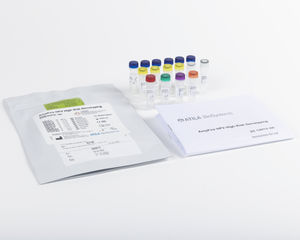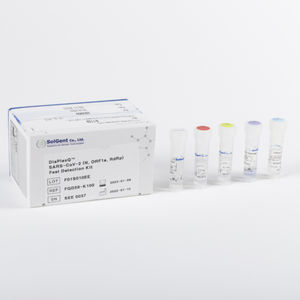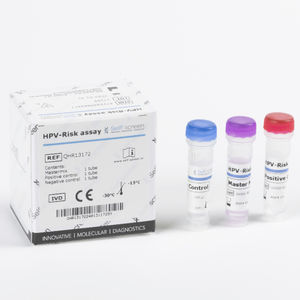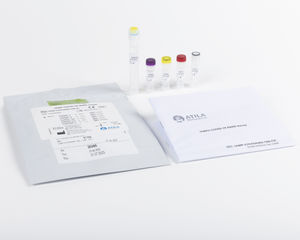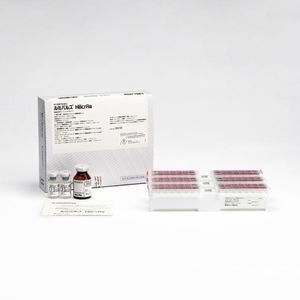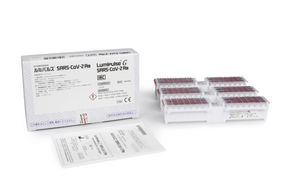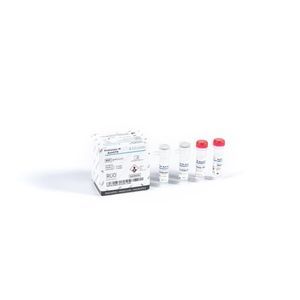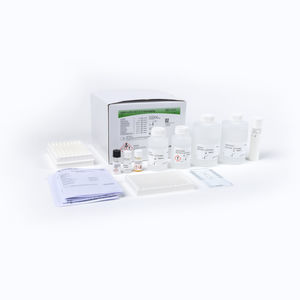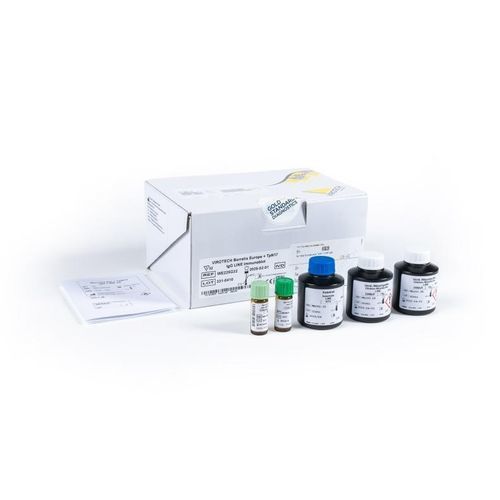
- Company
- Products
- Catalogs
- News & Trends
- Exhibitions
Infectious disease test kit 8082 seriesfor Lyme diseaseIgGIgM
Add to favorites
Compare this product
Characteristics
- Applications
- for infectious diseases, for Lyme disease
- Tested parameter
- IgG, IgM
- Micro-organism
- Borrelia burgdorferi
- Sample type
- clinical, serum, laboratory
- Analysis mode
- ELISA, Immuno-Blot
- Result display time
3 h
Description
Borrelia Line Immunoblot assays are for in vitro diagnostic (IVD) use for the qualitative detection of Borrelia (B.) burgdorferi senu lato specific IgG-respectively IgM-antibodies in human serum. Aside from its use in the serodiagnosis of Lyme borreliosis, the IgG Line Immunoblot is also suited for the diagnosis of neuroborelliosis in CSF.
The Borrelia Line Immunoblot assays are strip-based methods using an optimized combination of native, highly purified and recombinant B. burgdorferi s.l. antigens applied in well-defined positions to nitrocellulose strips by a micro-dispensing method.
The presence of specific IgG-respectively IgM antibodies to B. burgdorferi s.l. can be detected within 2,5 hrs.
Details
About Lyme-Borreliosis
Lyme-Borreliosis is a systematic disease caused by an infection with the spirochaeta B. burgdorferi.1,2 Transmission of the spirochaete to humans is effected by the bite of an infected tick. In Europe the tick Ixodes ricinus has been identified as main vector.3 The following human pathogenic B. burgdorferi species are currently recognised in Europe: B. burgdorferi sensu stricto, B. garinii, B. afzelii, B.spielmanii and B. bavariensis.4,3,5,5,7,8 They are comprised under the term Borrelia burgdorferi sensu lato (s.l).
Lyme Borreliosis is a multisystem disease, which takes its course in stages, with a predominantly involvement of skin, joints and nervous system. Due to the wide spectrum of occurring clinical manifestations, the diagnosis of the Lyme-Borreliosis is difficult3. Differential-diagnostically meaningful is above others the limitation compared with different dermatological (e.g. B-cell-lymphom of the skin, Lupus erythematodes),
Related Searches
- Fujirebio test kit
- Fujirebio solution reagent
- Fujirebio blood test kit
- Fujirebio serum test kit
- Fujirebio immunoassay test kit
- Fujirebio plasma test kit
- Fujirebio research reagent
- Fujirebio infectious disease test kit
- Fujirebio protein reagent
- Fujirebio diagnostic reagent
- Fujirebio laboratory reagent
- Enzyme reagent kit
- Fujirebio molecular biology test kit
- Fujirebio respiratory disease test kit
- Whole blood detection kit
- Histology reagent kit
- Optical assay kit
- Fujirebio clinical test kit
- Immunology reagent
- Cassette assay kit
*Prices are pre-tax. They exclude delivery charges and customs duties and do not include additional charges for installation or activation options. Prices are indicative only and may vary by country, with changes to the cost of raw materials and exchange rates.


